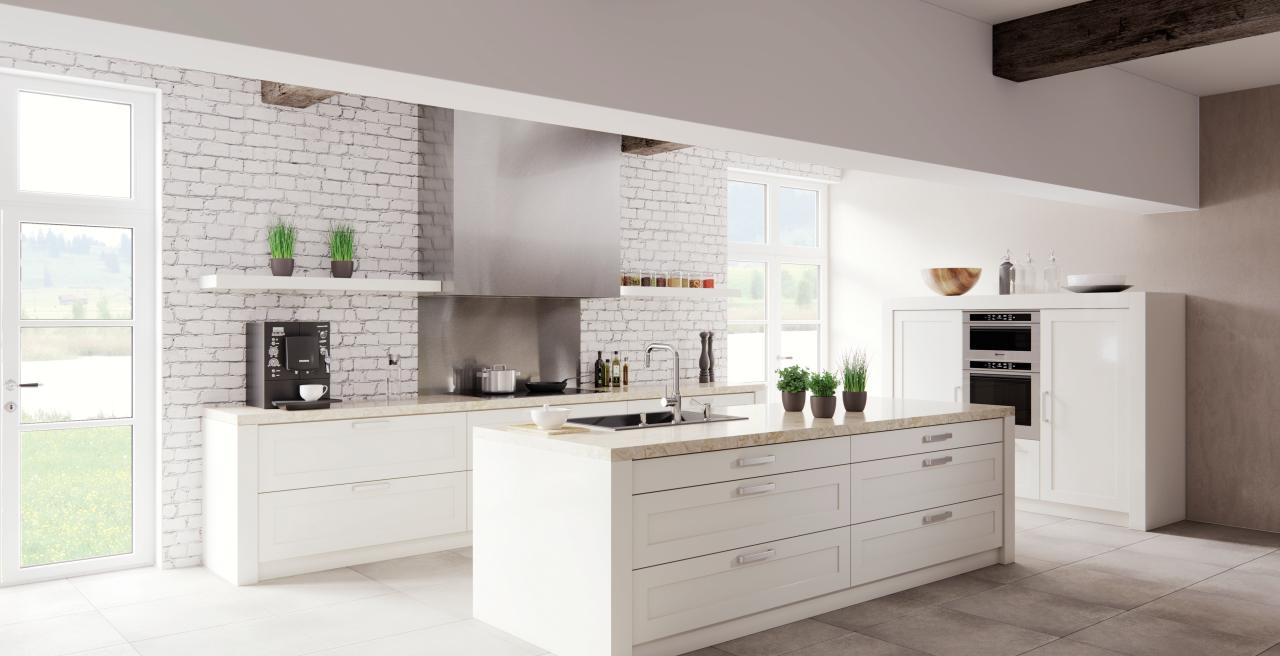1
/
0
Renovating your kitchen is the perfect time to choose elements that truly work for you. From adding more storage to changing the layout, the possibilities are endless and should be designed to suit your needs both in terms of space and design. Here are our top tips for planning your kitchen layout.
Make a list of your needs
It would be pointless to design a kitchen that looks nice but doesn’t fit around you; every element should suit your needs. Write a list of everything you require, followed by a list of all the things you want - that way, you’ll be sure to end up with a kitchen that suits everyday use. Include things like the amount of storage you need, the number of appliances and space required for each and so on, working your way up from functional to aesthetic features.
Budget
Anyone who has ever watched Grand Designs knows that when it comes to home renovations, it’s not always easy to stick to a budget! Of course, well planned budgets are entirely possible to achieve. Download our handy kitchen renovation budget planner to help you stay on track and manage your spending - you can incorporate the items included in your ‘list of needs’ and budget for the luxury items you want!
Map out your plumbing and heating
Mapping out where your kitchen appliances and heating will go is important, especially if you’re planning on changing the layout. Working around an existing layout should be fairly straightforward, but if you’re looking to have an island built in your kitchen, you need to be sure that the plumbing and electricity supply can be put in place before you begin work.
Plan lighting and fixtures
Create a moodboard of kitchen lighting and fixtures, keeping a note of the measurements so you can be sure they’ll fit when the time comes. Lighting is an incredibly important element to consider, however, choosing the right kitchen sink and tap should be on your radar too; don’t let the decision wait until the very last minute! Instead, choose a combination that not only looks good, but also transforms the space into an area that is highly functional and long-lasting.
Research kitchen brands and designers
When buying a new kitchen, it is important to find brands and designers that suit your style. Start getting inspiration on websites like Houzz and Pinterest - you can save images to create an online ‘moodboard’, perfect for referring back to when you’re ready to start visiting stores. Next, research kitchen designers and retailers near you and visiting their showrooms to get a feel for their style and areas of expertise. If they are active on social media, it might also be worth having a look on their profiles to see pictures of their previous work.
Other things to consider
1. Keep a folder of ideas you like
As well as using Houzz and Pinterest for design inspiration, Google Drive is a great place to store your ideas online; all you need is a Gmail account to get started. You can create spreadsheets, store images, and better still, access everything from your smartphone using the Google Drive app. Additionally, keep a physical folder containing images from home magazines, paint swatches and brochures to help keep all your ideas in one place.
2. Plan for the future
Design and style trends come and go, but expensive kitchen renovations happen once every 10 to 15 (even 20) years! It’s incredibly important to choose a kitchen style that you will enjoy, even when trends start to develop and change. Of course, features like kitchen taps and furniture can be changed with relative ease - but worktops and cabinets are more difficult to replace. Choose something timeless to make the most out of your money!
3. Be selective about where you spend your cash
It is worth investing in the core elements of a kitchen renovation such as cabinets, doors, appliances, kitchen sinks and taps. Buying good quality items ensures you won’t need to replace them for many years. However, accessories and furniture can be changed more regularly to freshen-up or modernise the room. Take a look at our article on ways to add a vintage touch to your kitchen which provides inspiration on the types of accessories you can add to your kitchen to update the look.
Do you have any suggestions about the best ways to plan a kitchen renovation? Email us with your thoughts; we’d love to add your feedback to this article!
